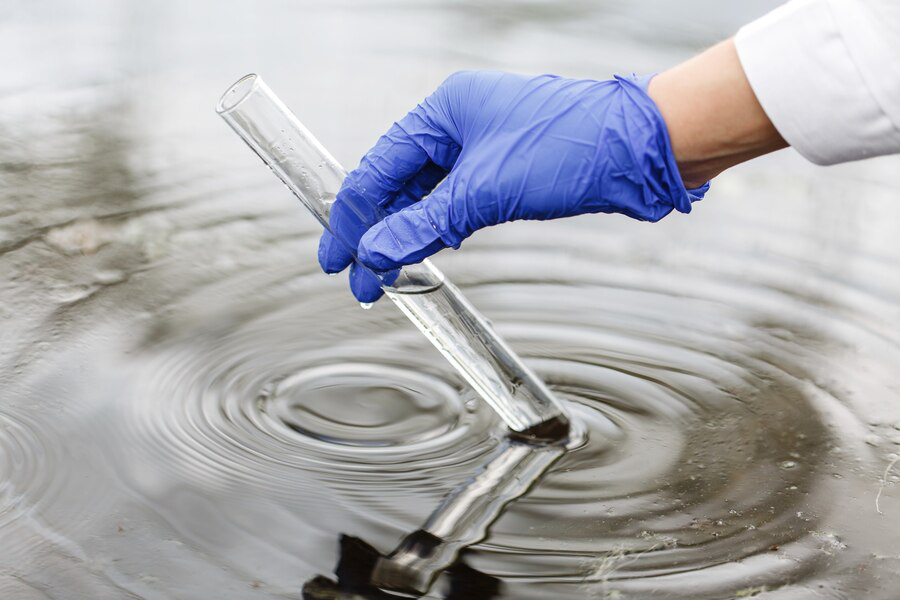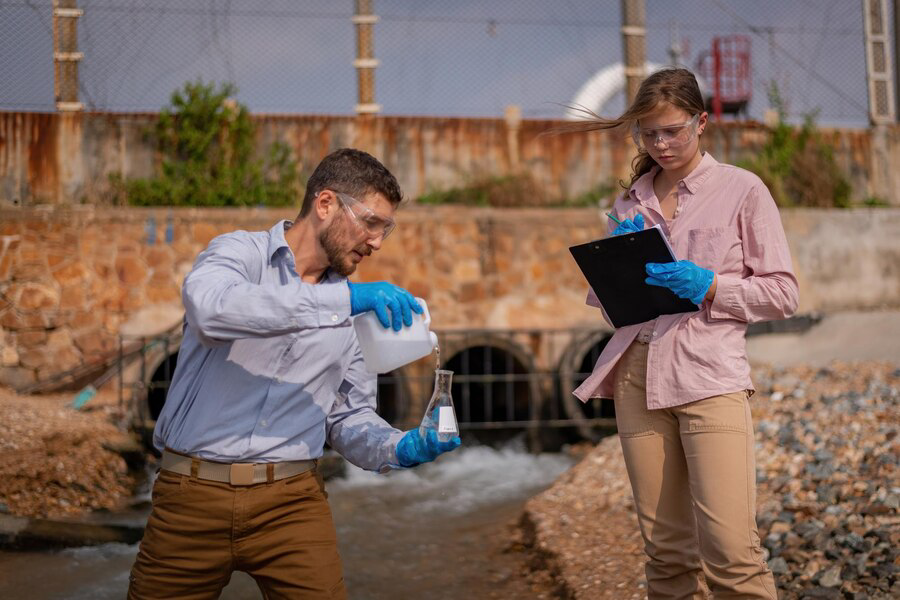In the aftermath of fire damage, the path to restoration is laden with challenges, but within adversity lies the potential for transformation. “Turning Crisis into Opportunity: Strategies for Effective Fire Damage Restoration” delves into the art of resilience, offering a roadmap for rebuilding that extends beyond mere recovery. This guide navigates the intricate terrain of fire-ravaged spaces, emphasizing innovative approaches to restoration that not only mend structural wounds but also cultivate a renewed sense of hope. From strategic planning to community engagement, we explore how adversity can be a catalyst for positive change. Discover how to harness the flames of destruction to forge a path toward a revitalized future, where the scars of the past become the foundation for a stronger and more vibrant community.
Assessment and Planning

A meticulous evaluation of fire damage is crucial, encompassing not only visible structural issues but also potential safety hazards and environmental ramifications. This comprehensive assessment forms the foundation for a strategic restoration plan, balancing immediate needs with long-term sustainability. Identifying the extent of damage allows for targeted interventions, ensuring that restoration efforts address both visible and underlying issues.
The plan should account for safety considerations, environmental impacts, and the unique characteristics of the affected area, fostering a holistic approach that goes beyond mere repairs to create a resilient and thriving community for the future.
Prioritize Safety Protocols
The paramount concern during fire damage restoration is the well-being of both workers and occupants. Stringent safety protocols must be in place, encompassing thorough asbestos testing, continuous air quality monitoring, and the provision of appropriate protective gear. This proactive approach minimizes health risks and guarantees a secure working environment. By prioritizing safety, restoration teams not only protect their workforce but also contribute to rebuilding trust within the community. Effective communication of safety measures fosters transparency, instilling confidence among residents and ensuring that the restoration process prioritizes the health and safety of all involved parties.
Swift Debris Removal
Efficient and prompt debris removal is a cornerstone in the restoration process, creating a secure and accessible workspace for subsequent activities. Hazardous materials must take precedence, necessitating a well-coordinated effort with waste disposal services to ensure proper and environmentally compliant disposal. This swift removal not only mitigates safety risks but also lays the groundwork for other restoration phases. By prioritizing the removal of debris, the restoration team establishes a clear path toward rebuilding, demonstrating a commitment to both safety and efficiency in the recovery process. Compliance with environmental regulations ensures responsible and sustainable practices, aligning with the broader goal of community resilience.
Collaborative Community Engagement
Foster a sense of community by involving residents, local businesses, and authorities in the restoration process. Open communication channels for feedback, ideas, and concerns to create a shared vision for the recovery.
Building Trust through Inclusive Participation
Foster a profound sense of community by actively involving residents, local businesses, and authorities in every step of the fire damage restoration process. Open communication channels to encourage feedback, ideas, and concerns, cultivating a collaborative atmosphere that strengthens community bonds. Embrace inclusivity to create a shared vision for recovery, ensuring that the restoration reflects the collective aspirations and values of the affected community.

Creating a Unified Approach
Community engagement is not merely a checkbox; it is the cornerstone of successful restoration. Establish forums for open dialogue, town hall meetings, and collaborative workshops where diverse voices can contribute to shaping the recovery roadmap. By actively involving the community, restoration efforts become a collective endeavor, fostering a sense of ownership and shared responsibility for the rebuilding process.
Empowering Local Businesses
Recognize the vital role of local businesses in the community’s identity. Collaborate with entrepreneurs to integrate their perspectives into the restoration plans, ensuring that the economic fabric of the area is considered. This approach not only aids in a holistic recovery but also lays the groundwork for a resilient and economically vibrant future.
Government Partnership for Sustainable Reconstruction
Forge partnerships with local authorities to align restoration initiatives with broader community development goals. Collaborative efforts with government agencies can streamline processes, provide additional resources, and ensure that restoration projects adhere to regulatory standards. Together, communities and authorities can lay the foundation for a resilient and thriving post-fire environment.
As we navigate the journey of rebuilding, the strength of our community lies in collaboration. By fostering inclusive engagement, we pave the way for a restoration that not only heals physical scars but also nurtures the spirit of unity and shared purpose.
Advanced Cleaning Technologies
Employ state-of-the-art cleaning technologies to eliminate smoke residue, soot, and lingering odors. Utilize eco-friendly methods to minimize environmental impact and promote sustainable practices.
Purifying Spaces with Cutting-Edge Solutions
Elevate the restoration process by harnessing state-of-the-art cleaning technologies designed to eliminate smoke residue, soot, and persistent odors. Implement eco-friendly methods to minimize environmental impact, aligning restoration efforts with sustainable practices that prioritize both immediate recovery and long-term environmental health.
Tech-Driven Odor Removal
Say goodbye to lingering odors with advanced technologies that go beyond traditional methods. Explore ozone treatments, thermal fogging, and other innovative approaches that neutralize odors at their source, ensuring a fresh start for affected spaces. This tech-driven odor removal not only enhances living conditions but also contributes to the overall well-being of the community.
Environmentally Conscious Cleaning
Embrace cleaning solutions that not only eradicate visible damage but also minimize the environmental footprint. From biodegradable cleaning agents to energy-efficient equipment, prioritize technologies that align with sustainable practices. This commitment to eco-friendly restoration not only aids in immediate recovery but also ensures a healthier environment for future generations.
Precision Soot and Residue Removal
Utilize cutting-edge techniques for the thorough removal of soot and smoke residue. From dry ice blasting to specialized chemical cleaning, these precision methods target specific surfaces, preserving structural integrity while eradicating the remnants of fire damage. By employing these advanced technologies, restoration efforts achieve a level of precision and effectiveness that traditional methods may lack.
Integration of Smart Cleaning Solutions
Explore the integration of smart cleaning solutions that leverage technology for real-time monitoring and adaptive cleaning strategies. From sensor-based air quality monitoring to automated cleaning processes, these innovations enhance efficiency and effectiveness, ensuring that restoration efforts stay ahead of evolving challenges.
In the face of fire damage, our commitment to restoration extends beyond mere repairs. By embracing advanced cleaning technologies, we not only erase the visible scars but also pave the way for a revitalized and environmentally conscious community, ready to embrace a brighter future.
Customized Restoration Plans
Tailor restoration plans to individual properties, recognizing unique architectural features and historical significance. Preserve elements that contribute to the area’s character while ensuring compliance with safety codes.
Preserving Character: Tailoring Plans to Unique Properties
In the intricate process of fire damage restoration, a one-size-fits-all approach falls short. Tailor restoration plans to individual properties, recognizing unique architectural features and historical significance. Preserve elements that contribute to the area’s character while ensuring compliance with safety codes, allowing for a restoration that seamlessly blends heritage with modern resilience.
Architectural Assessment for Individual Properties
Conduct a meticulous assessment of each property, recognizing architectural nuances that define its character. From historical facades to unique structural elements, understanding the essence of each building lays the groundwork for a restoration plan that honors the past while embracing the future. This tailored approach ensures that the community’s identity remains intact.
Balancing Preservation with Modern Safety Standards
Navigate the delicate balance between preservation and safety by incorporating modern standards into restoration plans. While preserving historical elements is paramount, adherence to contemporary safety codes ensures the long-term well-being of occupants. This harmonious integration guarantees that the restoration not only revitalizes but also secures the community’s future.
Community Input in Restoration Design
Engage the community in the restoration process by seeking input on design elements. Embrace participatory workshops and surveys to gather insights into what residents value most about their neighborhood. By incorporating community preferences into the restoration plans, the outcome becomes a true reflection of the collective vision, fostering a sense of pride and ownership.
Flexible Plans for Diverse Properties
Recognize the diversity of properties within the affected area, each with its own story and significance. Develop flexible restoration plans that adapt to the unique needs of different buildings, ensuring a nuanced approach that respects the intricacies of each structure. This adaptability contributes to a cohesive and harmonious restoration across the entire community.
In the mosaic of fire damage restoration, individuality matters. By crafting customized plans that respect the unique heritage of each property, our restoration efforts become a celebration of community identity. Together, we weave a tapestry that honors the past while embracing a resilient future.
In the pursuit of turning crisis into opportunity, we, at Precision Restoration, Inc., believe that effective fire damage restoration extends beyond rebuilding structures; it’s about revitalizing communities and fostering resilience. Our strategies encompass collaborative community engagement, advanced cleaning technologies, customized restoration plans, and streamlined insurance navigation. As dedicated experts in Edmond, Oklahoma, we stand ready to transform adversity into a catalyst for positive change. For swift and efficient restoration services, contact us at 844-245-7979. Together, let’s rebuild, renew, and create a stronger foundation for a vibrant future.



